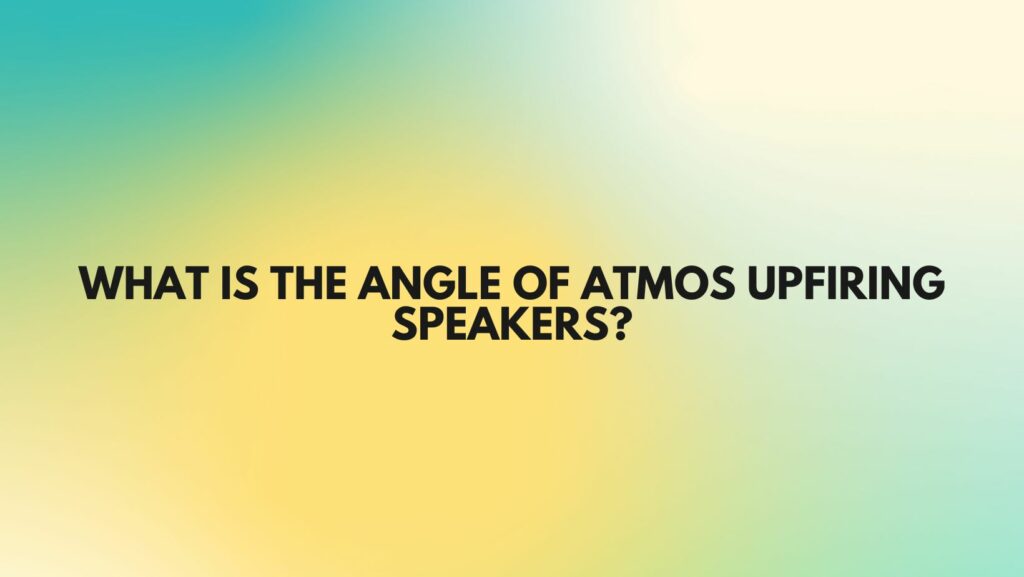Dolby Atmos, renowned for its immersive three-dimensional audio experience, has brought a paradigm shift to home entertainment. A key element in this revolutionary audio technology is the placement of upward-firing speakers that bounce sound off the ceiling. In this article, we delve into the specifics of Dolby Atmos upfiring speaker angles, unraveling the importance of precision in achieving the optimal auditory experience.
Understanding Dolby Atmos Upfiring Speakers:
Upfiring speakers are a critical component in a Dolby Atmos system, responsible for delivering height channels by projecting sound towards the ceiling. These speakers create the illusion of audio coming from above, adding a vertical dimension to the overall soundstage. The angle at which these speakers project sound is a crucial factor in ensuring accurate and immersive overhead effects.
Optimal Angle for Dolby Atmos Upfiring Speakers:
- Manufacturer Specifications: The optimal angle for Dolby Atmos upfiring speakers is typically specified by the speaker manufacturer. While a common guideline is to aim for an angle around 45 degrees, it’s essential to refer to the specific recommendations provided in the speaker’s manual or documentation. Manufacturers consider the design and characteristics of their speakers when determining the ideal projection angle.
- Listener Position Considerations: When setting up Dolby Atmos upfiring speakers, consider the primary listening position. The projection angle should be adjusted to ensure that the sound reflections converge at the listener’s ear level, providing an accurate representation of overhead effects. This alignment contributes to a more immersive and cohesive audio experience.
- Ceiling Height Impact: The height of the ceiling in your room influences the effectiveness of upfiring speakers. In spaces with higher ceilings, adjustments may be necessary to account for the increased distance sound must travel before bouncing back down. Some speaker models offer adjustable settings to accommodate varying ceiling heights.
- Experimentation for Optimization: Achieving the perfect angle may require some experimentation. Consider testing different angles within the recommended range and assessing how they impact the overall sound quality. Fine-tune the angles based on the specific characteristics of your room and personal preferences to find the optimal setup.
- Room Acoustics and Surface Material: The acoustics of the room and the type of ceiling material can influence the effectiveness of upfiring speakers. Reflective surfaces like hardwood or tile may enhance the bouncing effect, while softer materials may absorb sound. Be mindful of these factors when determining the optimal angle for your speakers.
Conclusion:
In the pursuit of a truly immersive Dolby Atmos experience, attention to detail in the placement of upfiring speakers is paramount. The angle at which these speakers project sound contributes significantly to the realism and accuracy of overhead effects. By adhering to manufacturer specifications, considering listener position, and accounting for room characteristics, enthusiasts can unlock the full potential of their Dolby Atmos systems, ensuring a captivating and lifelike audio experience that envelops the audience in a three-dimensional sonic landscape.

